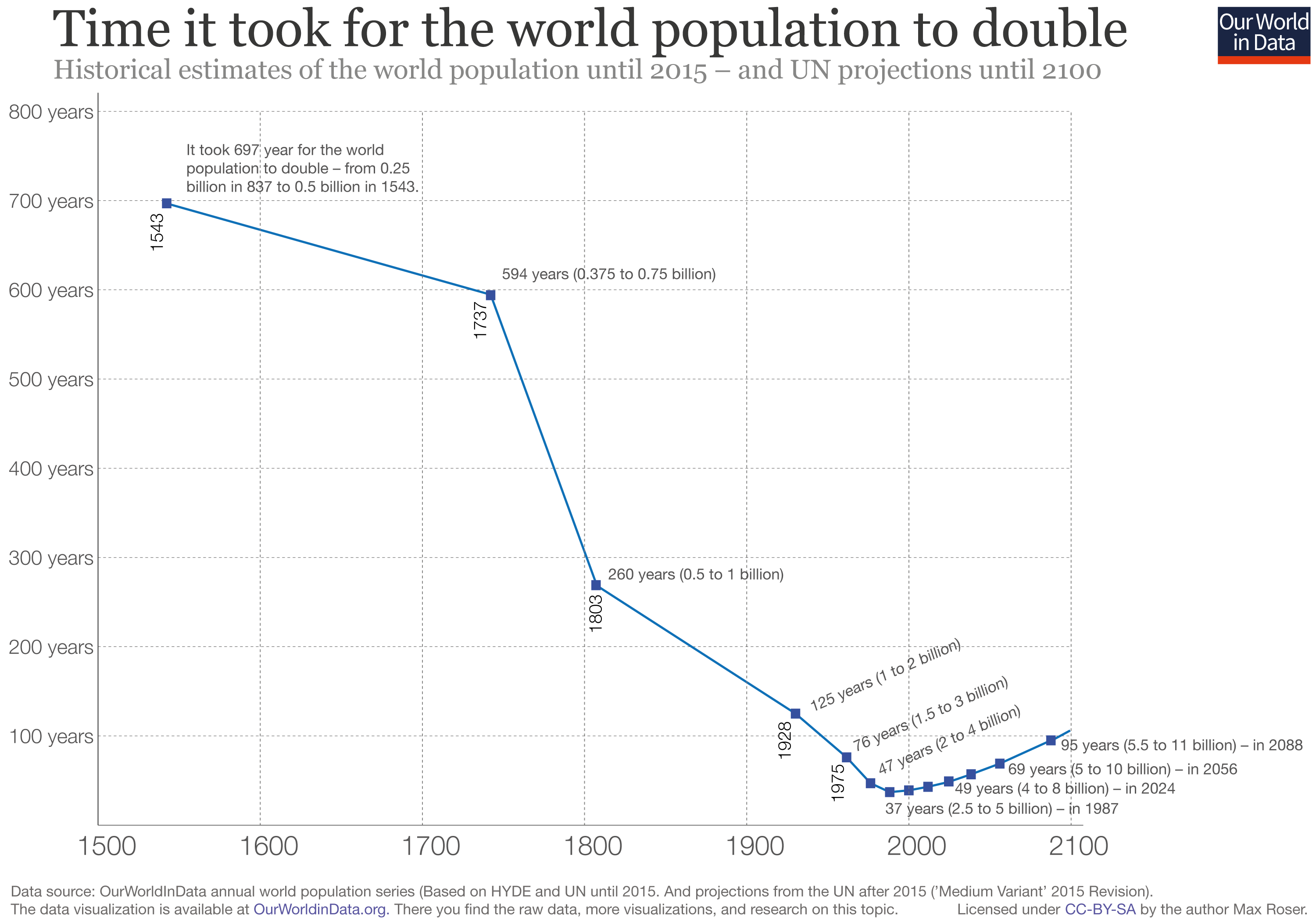If anyone out there has missed all of the Avengers' movie cycle -- in particular the "Infinity War" then I apologize for what may be a spoiler and warn you to not continue -- though this pertains only to a little bit of the movies.
Thanos, the antagonist (villain/lunatic/self-described savior/your label here), has a mission -- to improve the lives of sapients in the galaxy by reducing overpopulation. Most people would probably agree that overpopulation can be very stressful to a society and its available resources. However, eliminating half of the human population would be, at best, a very short term solution. As seen from the following graph on human population, doubling population -- while variable -- is typically not an infinite process (though it could be):
As seen above, the human (it would likely be different for other sapients) population doubling rate has varied throughout history -- with the most rapid doubling taking place around 1987. Expected doubling time slows down to 95 years in 2088 -- about 2 2/3 times as long as in 1987.
Population increase rate is a correlation between birth rates, death rates, and life expectancy. If as many people die within a year as are born, the growth rate is 0 (zero). If more people die than are born, there is a negative growth rate. It people never die (the goal of universal immortality is achieved) then you would need a zero birth rate to achieve stability. All of these scenarios have been examined in literature (and speculated upon in "non-fiction"). Many of the variants, as considered, have their own challenges and advantages.
Some factors which affect birth rates, death rates, and lifespan:
- Medical care -- the ability to prevent, or fix, "natural" causes of death
- Peace/war -- how many people's lives are preserved or eliminated by direct action.
- Procreative drive -- the desire for more, or fewer, children
- Fertility -- the ability to create more, or fewer, children
- Resource access -- having enough food, environmental support, etc.
- Environmental health -- local and global contaminants and poisons
- Societal policies -- agreed upon rules that decrease, or increase, birth rates, death rates, and lifespan
- More -- ???
However it is categorized, we can easily see that a single event will not make a long-term result. If we look at general human history, wars and pandemics made only a very temporary dip in population. Long-term problems require long-term analysis, agreement, and planning.

